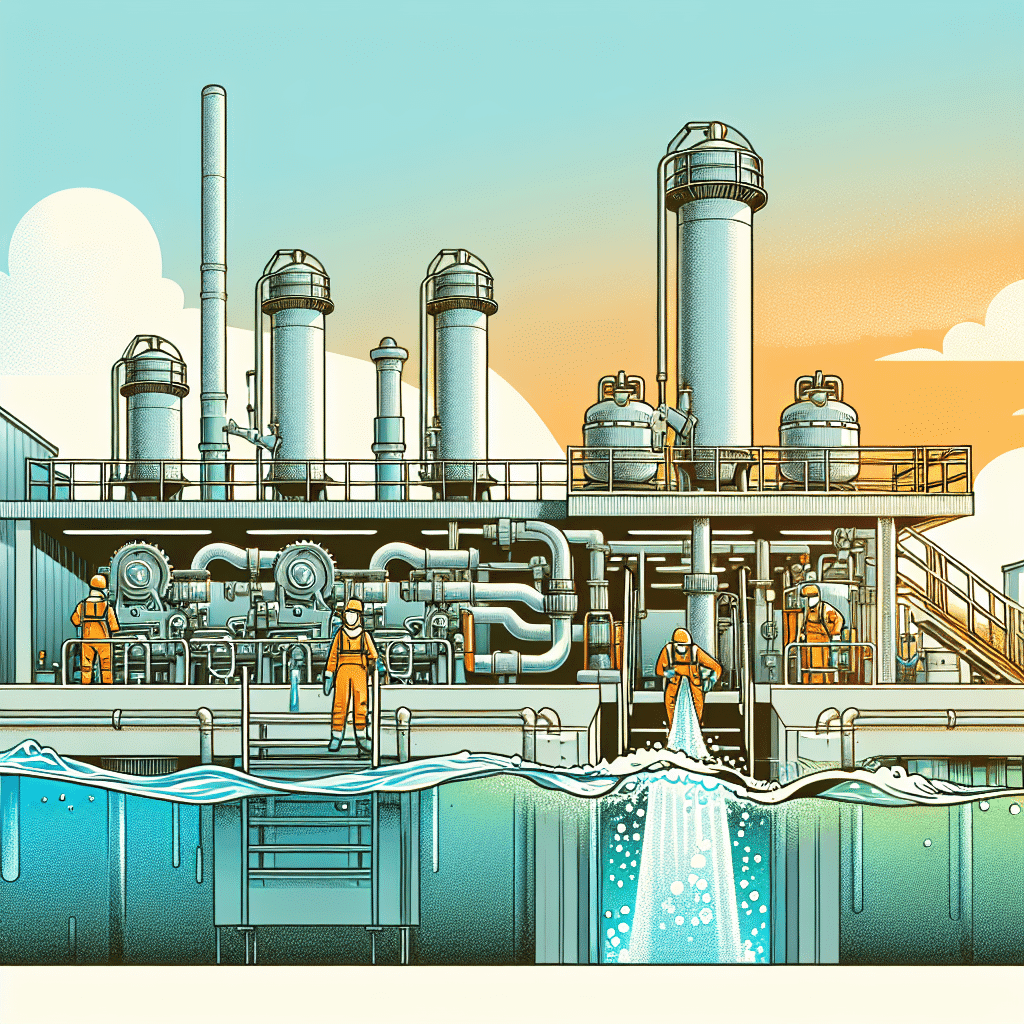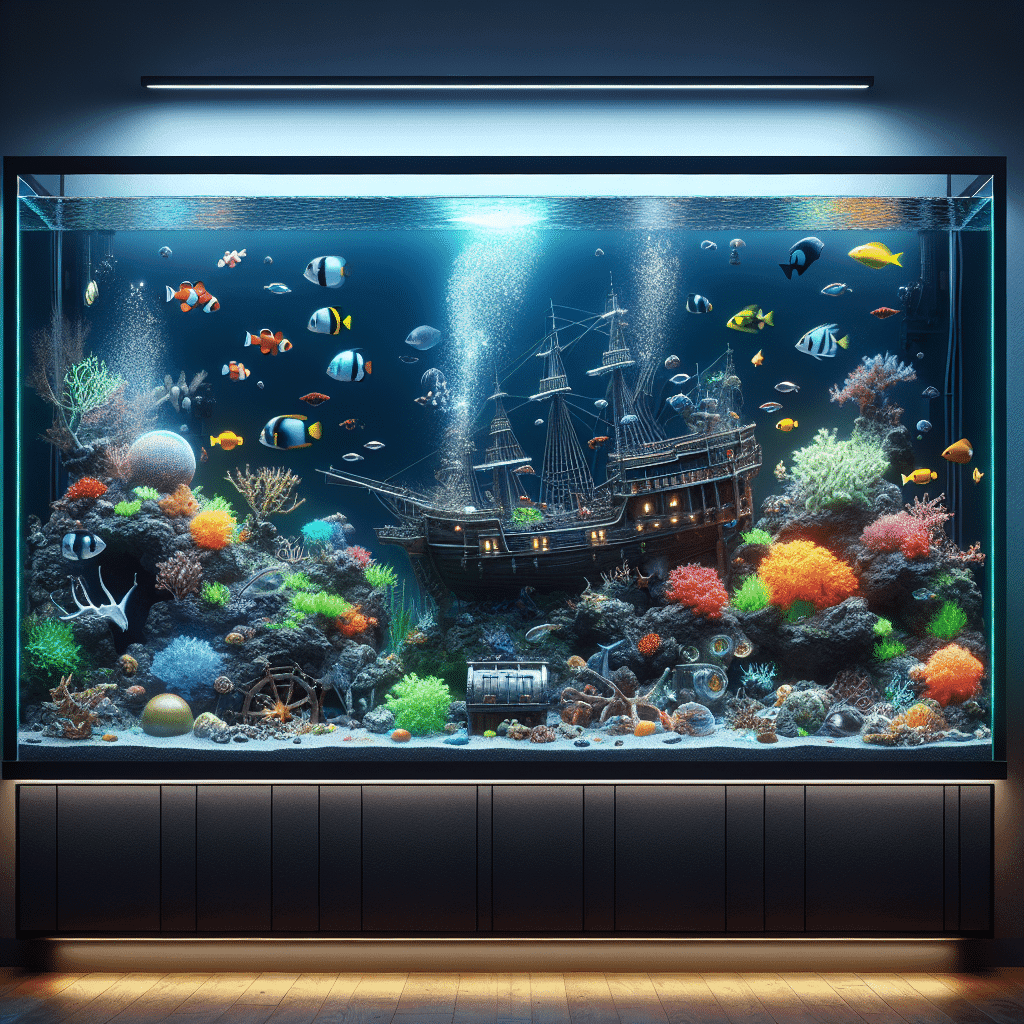Understanding Nitrites in Food
In my journey through the world of aquariums, I’ve come across some important concepts that are essential for maintaining a healthy marine environment. One of these concepts is the role of nitrites, which can affect not just fish tanks but also our understanding of dietary components in food.
Nitrites vs. Nitrates
Nitrites and nitrates are compounds that naturally occur in the environment and within our bodies. They can also be added as preservatives in food. While both compounds can be beneficial—nitrites can change into nitric oxide, which helps dilate blood vessels and lower blood pressure—it’s crucial to understand their differences.
| Compound | Naturally Found In | Function |
|---|---|---|
| Nitrites | Cured meats, some vegetables | Can convert to nitric oxide |
| Nitrates | Leafy vegetables (like spinach and lettuce), drinking water | Can convert to nitrites in the body |
Nitrates are primarily sourced from vegetables, while nitrites mainly come from processed meats. Understanding this helps me appreciate the balance I need in my diet as well as in my aquarium.
Formation of Nitrosamines
While nitrites and nitrates have their benefits, they can also pose risks when they form nitrosamines. These compounds can occur when nitrates or nitrites are heated at high temperatures, particularly during the cooking of processed meats. Nitrosamines are known carcinogens, which means they can increase the risk of cancer. This is why manufacturers must limit nitrite use in processed meats by law.
In my experience as an aquarium hobbyist, I find that managing levels of nitrites in my tank is just as important as understanding their role in food. High nitrite levels can be harmful to fish, so it’s crucial to keep the water safe and balanced. For more information on maintaining water quality, check out our guide on water safety.
By grasping the basics of nitrites and nitrates, I can make informed decisions not only about what I feed my fish but also about my dietary choices. It’s all about balance!
Health Concerns and Regulations
Carcinogenicity of Nitrosamines
Nitrosamines are a significant concern when it comes to the safety of food products, especially in processed meats. These compounds are classified as highly hazardous chemical carcinogens with both carcinogenic and teratogenic effects. The formation of nitrosamines often occurs when nitrites or nitrates are cooked at high temperatures, which can lead to an increased risk of cancer. Because of this, it’s crucial for me as a hobbyist to be aware of how these compounds can affect not just my aquarium but also my health.
To mitigate the risk of nitrosamine exposure, choosing processed meat products that are low in additives containing nitrates is recommended. Additionally, food manufacturers are legally required to limit the amount of nitrites in their products and are encouraged to add vitamin C, which inhibits nitrosamine formation. Understanding these risks helps inform my choices in both dietary and aquarium-related products.
Regulatory Measures on Nitrites
In response to the health risks posed by nitrosamines, various regulations have been established to control the use of nitrites in food products. For instance, in the European Union, there are strict regulations regarding the amount of nitrite that can be added to meat products. The maximum allowable concentration for nitrite in sterilized meat products is set at 100 mg/kg. This helps to minimize the potential carcinogenic effects associated with nitrosamine formation (NCBI).
Countries like Denmark have implemented even stricter measures, resulting in lower levels of nitrite additives compared to other EU nations. Furthermore, since 2016, there has been a noticeable reduction in nitrite content across various meat products. As a marine aquarium enthusiast, I find it essential to consider how regulations not only influence food safety but also the quality of the products I might use in my aquarium setup.
By staying informed about these health concerns and regulatory measures, I can make better choices for my health and the health of my aquatic environment. If you’re interested in ensuring the safety and quality of your aquarium water, be sure to check out our articles on water safety and aquarium maintenance.
Sources of Nitrites and Nitrates
Understanding where nitrites and nitrates come from is essential for maintaining a healthy reef tank. As I dive into this topic, I find it fascinating how these compounds naturally occur in our environment and food sources, impacting both our aquariums and our health.
Natural Sources in Food
Nitrates are commonly found in various foods, especially in vegetables. Leafy greens like spinach, lettuce, and rocket are major contributors to dietary nitrate intake. In fact, about 80%-85% of human exposure to nitrates comes from consuming vegetables, with fruits and cereals also adding to this intake (NCBI). When it comes to nitrites, these are primarily sourced from cured and processed meats.
Here’s a breakdown of dietary sources of nitrates and nitrites:
| Food Source | Nitrate Content | Nitrite Content |
|---|---|---|
| Leafy Vegetables (e.g., spinach, lettuce) | High | Low |
| Fruits | Moderate | None |
| Cured Meats | Low | High |
| Drinking Water | Varies | Low |
Environmental Contamination
Nitrates can also enter our food chain as environmental contaminants. This primarily occurs through agricultural practices, particularly intensive farming methods and livestock production. Fertilizers used in these practices contribute to nitrate accumulation in water sources, which can eventually find its way into our diets (EUFIC).
Here are some factors that influence nitrate contamination:
| Factor | Impact on Nitrate Levels |
|---|---|
| Agricultural Fertilizers | Increases nitrate levels in soil and water |
| Livestock Production | Contributes to nitrogen runoff |
| Sewage Discharge | Potentially high in nitrates, affecting water quality |
It’s crucial to monitor these sources, as they can affect the overall health of my aquarium. For instance, elevated nitrites can be harmful to fish and other marine life. Understanding how to manage and remove nitrites in my reef tank is essential for creating a thriving environment for my aquatic friends.
Impact on Human Health
Understanding how nitrites and nitrates affect human health is essential, especially for those of us who are conscious about our food choices.
Absorption and Effects
When I consume food containing nitrites, they are absorbed primarily through the digestive system. Most of my exposure to nitrates, however, comes from vegetables, making up about 80% of my intake, while animal products contribute only about 5% to my nitrite exposure. The majority of dietary nitrates come from leafy vegetables like spinach and lettuce, which are not only healthy but also delicious!
Nitrites can convert to nitrates in the body, and both can potentially lead to the formation of nitrosamines, which are compounds of concern due to their possible carcinogenic properties. However, the levels I typically encounter in a balanced diet are generally considered safe. It’s interesting to note that even though higher nitrate levels in drinking water have been discussed, there’s no solid evidence linking them to cancer.
Recommended Daily Intake
Health organizations have set guidelines to help me stay within safe limits. The acceptable daily intake (ADI) for nitrites is around 0.06 to 0.07 milligrams per kilogram of body weight per day, while for nitrates, it’s significantly higher at 3.7 mg/kg bw/day (NCBI).
| Substance | Acceptable Daily Intake (mg/kg body weight) |
|---|---|
| Nitrites | 0.06 – 0.07 |
| Nitrates | 3.7 |
By being aware of these intake levels, I can make informed decisions about my diet, especially when selecting processed foods that may contain nitrites. Balancing my meals with plenty of vegetables not only reduces my nitrite intake but also boosts my overall health. If you’re looking to improve your aquarium setup or maintain the health of your marine life, consider checking out resources like saltwater aquarium setup or aquarium maintenance for more tips!
Nitrites in Meat Products
Traditional Use in Curing
I’m really excited to talk about the role of nitrites in meat products! Nitrites are commonly used as curing agents in the meat industry. They enhance the quality of meat by improving flavor, color stability, and microbiological safety. They also help to prevent spoilage and combat foodborne pathogens, making our favorite cured meats safe to eat. According to ScienceDirect, nitrites exhibit both bacteriostatic and bactericidal actions, which is crucial for maintaining the integrity of meat products.
Here’s a quick overview of how nitrites function in curing:
| Benefit | Description |
|---|---|
| Flavor Development | Enhances the taste of cured meats |
| Color Stability | Maintains the appealing red color |
| Microbiological Safety | Prevents the growth of spoilage bacteria |
| Lipid Oxidation Prevention | Reduces rancidity in fatty meats |
Alternatives and Substitutes
While nitrites are widely used, there are growing concerns about their health effects, such as the potential link to gastric cancer. This has led to research exploring alternatives. Interestingly, the use of coagulase-negative staphylococci (CNS) strains as substitutes has shown promise. These strains can produce color-generating nitric oxide (NO) when combined with L-arginine, creating desirable attributes similar to those provided by nitrites in cured meats (ScienceDirect).
Additionally, studies have indicated that natural alternatives, like vegetable juice powder combined with starter cultures, can replicate the quality and sensory attributes of traditionally cured products. This is exciting because it opens doors for healthier options without sacrificing taste.
Here’s a comparison of some nitrite alternatives:
| Alternative | Description |
|---|---|
| Coagulase-negative Staphylococci | Produces nitric oxide for color and flavor |
| Vegetable Juice Powder | Natural flavor and color enhancement |
| Bacteriocins | Natural preservatives from bacteria |
| High Hydrostatic Pressure | Reduces or eliminates nitrites safely |
These alternatives indicate that while nitrites have been the go-to for curing, innovative solutions are on the horizon, making it an exciting time for meat processing! If you’re looking to learn more about maintaining proper conditions in your aquarium, check out our guide on saltwater aquarium setup.
Natural Solutions
Finding effective ways to manage nitrites in my saltwater aquarium has been an exciting journey. I’ve discovered that there are several natural solutions, including plant extracts and additives, that can make a significant difference. Let’s dive into these options!
Plant Extracts and Additives
Using plant extracts and additives is an innovative approach to managing nitrites in my aquarium. Various substances like polyphenols, vitamins, and specific plant extracts can help reduce the toxicity of nitrosamines, which is great news for both health and the aquatic environment (Journal of Agriculture and Food Research).
Here’s a look at some effective plant extracts:
| Plant Extract | Benefits |
|---|---|
| Green Tea Extract | Contains polyphenols that may help reduce nitrosamine toxicity. |
| Beet Juice | Natural source of nitrates that can balance nitrite levels. |
| Garlic Extract | Known for its antibacterial properties and possible benefits in reducing nitrites. |
These natural additives not only help manage nitrites but can also promote overall health in my aquarium.
Effects on Meat Quality
The use of natural alternatives can greatly influence the quality of meat products. Research has shown that the incorporation of vegetable juice powder and starter cultures can yield meat products with quality and sensory attributes similar to those of traditionally cured products (NCBI).
Moreover, coagulase-negative staphylococci (CNS) strains can serve as substitutes for nitrates and nitrites in meat, maintaining the desirable red pigmentation while ensuring high-quality traits (ScienceDirect).
Here’s a summary of the effects of using these natural solutions in meat quality:
| Natural Solution | Effect on Meat Quality |
|---|---|
| Vegetable Juice Powder | Similar flavor and texture to traditionally cured meats. |
| CNS Strains | Maintains color and quality without synthetic nitrates. |
| L-Arginine Addition | Enhances pigmentation through nitric oxide formation. |
These findings are encouraging as they not only promote better health in my saltwater aquarium but also indicate a positive shift towards natural solutions in other areas like food processing. By integrating these solutions, I can significantly improve my aquarium’s health while contributing to a more sustainable environment. For more tips on keeping my aquarium safe, I often refer to our guides on water safety and aquarium maintenance.
Nitrites and Nitrosamines
Understanding the relationship between nitrites and the formation of nitrosamines is essential for anyone involved in maintaining a healthy aquarium. Nitrosamines are potentially harmful compounds that can form when nitrites react with certain amines, especially during processes involving heat. This reaction can occur in various environments, but I find it crucial to be aware of it in the context of my saltwater aquarium.
Formation and Risks
Nitrites, commonly used in meat preservation, can react with secondary amines during thermal processing, resulting in the formation of nitrosamines. These compounds are classified as highly hazardous chemical carcinogens with significant health risks, including carcinogenicity and teratogenicity (Journal of Agriculture and Food Research).
In an aquarium setting, while the direct formation of nitrosamines may not be a concern, it’s essential to monitor nitrite levels to prevent harmful conditions for aquatic life. Elevated nitrite levels can lead to toxicity in fish, which can manifest as stress and even death.
Mitigation Strategies
To mitigate the formation of nitrosamines, I focus on several strategies that are equally important in both food processing and aquarium maintenance:
Monitor Nitrite Levels: Regular testing for nitrite levels in the tank is vital. I use reliable test kits to ensure that nitrites are kept at safe levels.
Water Changes: Performing regular water changes helps dilute any harmful compounds, including nitrites, in the aquarium.
Maintain a Healthy Cycle: Ensuring my aquarium is properly saltwater aquarium cycling helps create a balanced environment where beneficial bacteria can thrive, converting nitrites into less harmful nitrates.
Limit Additives: If using additives or medications, I choose those that do not contain harmful nitrates or nitrites. This minimizes the risk of nitrosamine formation.
Use of Additives: Just as manufacturers add vitamin C to processed meats to inhibit nitrosamine formation, I consider using natural additives in my tank that promote healthy water conditions and reduce harmful compounds.
Temperature Control: Keeping the tank at stable temperatures helps prevent stress on fish and minimizes the conditions that might lead to nitrosamine formation.
By implementing these strategies, I can ensure a safer and healthier environment for my aquatic friends while keeping an eye on the potential risks associated with nitrites and nitrosamines. For more detailed information on setting up and maintaining a safe aquarium, check out my articles on saltwater aquarium setup and water safety.
International Regulations and Trends
Understanding regulations regarding nitrites is essential for anyone who wants to maintain a safe aquarium environment. In this section, I will share some exciting insights into the European Union’s regulations on nitrites and the reduction efforts in meat products.
EU Regulations on Nitrites
The European Union has established specific regulations concerning the use of nitrites in meat products. According to these regulations, the maximum allowable amount of nitrite that can be added to sterilized meat products is set at 100 mg/kg. This is an important measure to ensure consumer safety while still allowing for the preservation and coloring of meat products.
Denmark stands out as a country with stricter guidelines, utilizing lower levels of nitrite additives compared to other EU nations. This proactive approach has led to a noticeable reduction in nitrite content in various meat products since 2016. I find it fascinating how these regulations not only help to mitigate health risks but also encourage manufacturers to innovate and find alternatives.
| Country | Maximum Nitrite Level (mg/kg) |
|---|---|
| EU General Regulation | 100 |
| Denmark | Lower than EU standard |
Reduction Efforts in Meat Products
In recent years, there has been a growing trend toward reducing nitrite levels in meat products. This initiative is driven by health concerns linked to nitrites and their potential to form harmful nitrosamines. The European Food Safety Authority (EFSA) reassessed the safety of nitrites and nitrates as food additives in 2017. Their conclusion was reassuring: the current levels at which these additives can be included in foods are safe for consumers (EUFIC).
As a result, many manufacturers are exploring alternatives to traditional nitrite curing methods. These efforts include using natural plant extracts and other additives that provide similar preservation effects without the associated health risks. This shift not only enhances public health but also promotes a more sustainable approach to food production.
By staying informed about these regulations and trends, I can better navigate the complexities of maintaining a healthy aquarium environment. For more tips on creating a thriving saltwater aquarium, check out our articles on saltwater aquarium setup and aquarium maintenance.



